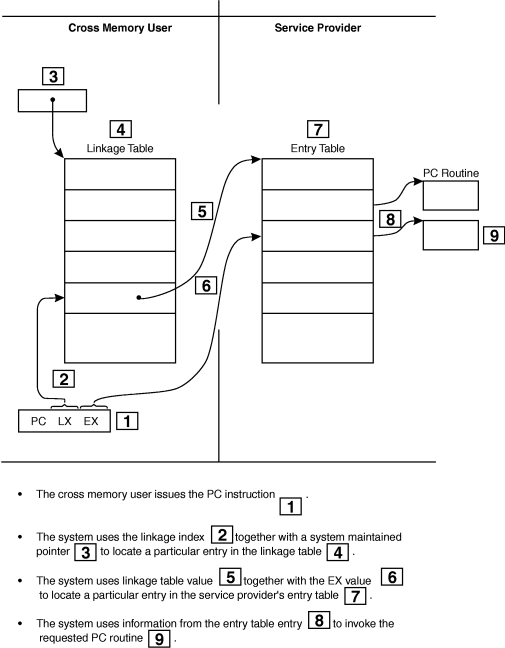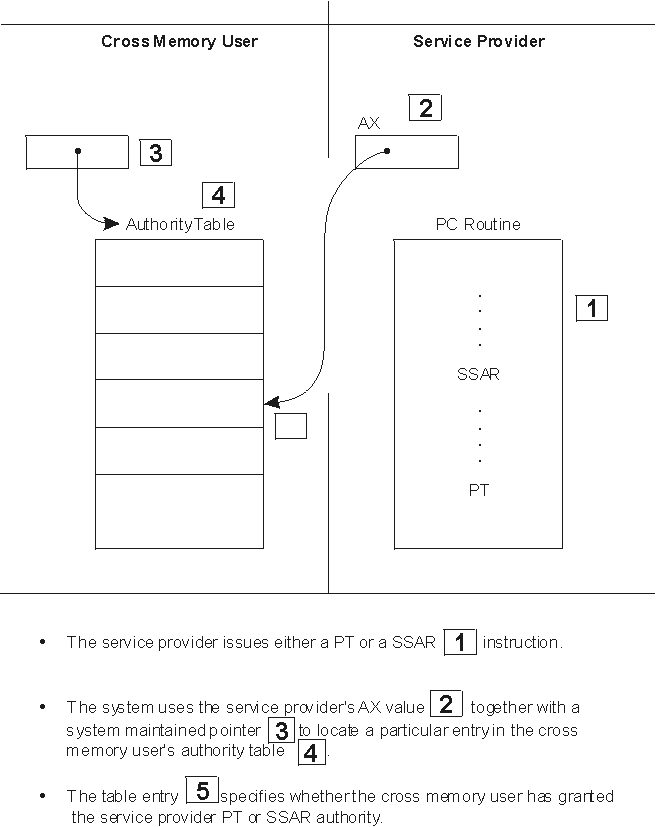 z/OS MVS Programming: Extended Addressability Guide
z/OS MVS Programming: Extended Addressability Guide
 z/OS MVS Programming: Extended Addressability Guide
z/OS MVS Programming: Extended Addressability Guide
|
Previous topic |
Next topic |
Contents |
Contact z/OS |
Library |
PDF
Address space authorization z/OS MVS Programming: Extended Addressability Guide SA23-1394-00 |
|
|
Each address space owns an authority table. Each table entry defines the PT and SSAR authority that another address space has with respect to the address space that owns the authority table. PT and SSAR authority determine whether an address space can issue PT and SSAR instructions with another address space as the instruction targets. For example, if a service provider's address space has PT and SSAR authority with respect to a user's address space, the service provider can issue PT and SSAR instructions with the target being the user's address space. Each table entry corresponds to a particular authorization index (AX) value. Therefore, the service provider's AX value corresponds to a specific entry in each user's authority table. That entry defines the service provider's PT and SSAR authority with respect to each user's address space. Two AX values, 0 and 1, have the same meaning for all address spaces. A value of 0 always corresponds to an authority table entry that provides neither PT nor SSAR authority. A value of 1 always corresponds to an entry that provides both PT and SSAR authority. The characteristics of the PC routines defined in the entry table
determine whether the service provider needs PT and SSAR authority.
The service provider needs the authority if either of the following
conditions are true:
When MVS™ initially creates an address space, the address space has neither PT nor SSAR authority to any address space. The service provider uses the AXSET and ATSET macros to establish PT and SSAR authority. If a service provider needs PT and SSAR authority to all address spaces, the service provider must issue the AXSET macro and request an AX value of 1. Figure 1 and Figure 2 show the environment needed to issue a PC instruction, a PT instruction, or an SSAR instruction. An address space can have only one AX value at any time. The service provider that runs in the address space owns the current AX value for the address space. Only the service provider should set the AX value from 0 to a single nonzero value, or from a nonzero value to 0 in the address space. Other code besides the service provider that runs in the address space should not alter the current AX value, or unpredictable results occur. Figure 1. PC instruction execution environment
 Figure 2. PT and SSAR instruction execution environment
 


|
 Copyright IBM Corporation 1990, 2014 Copyright IBM Corporation 1990, 2014 |